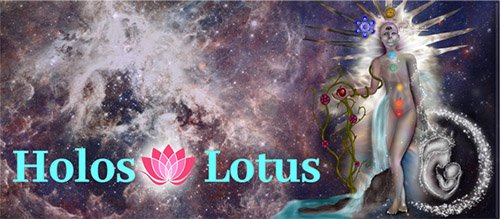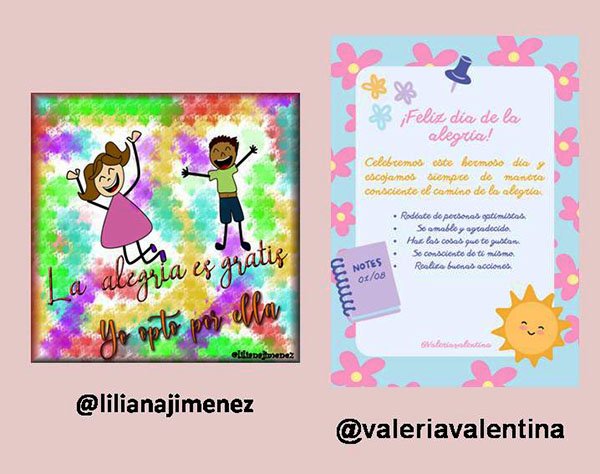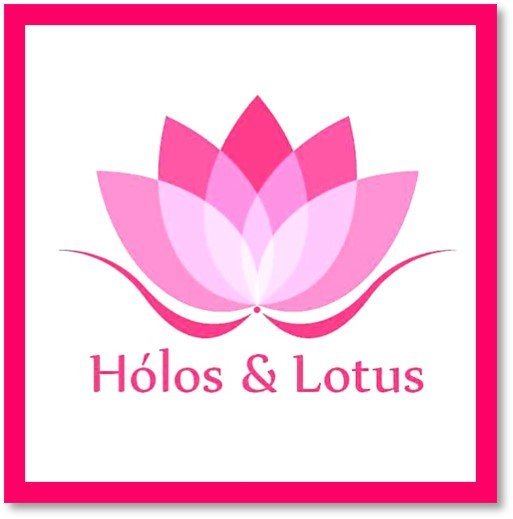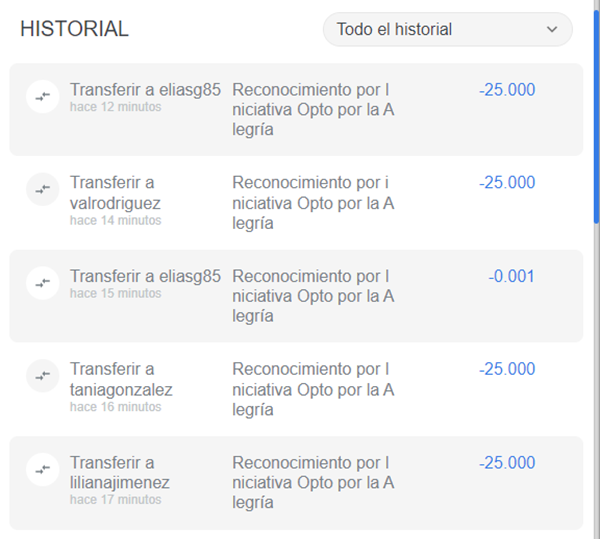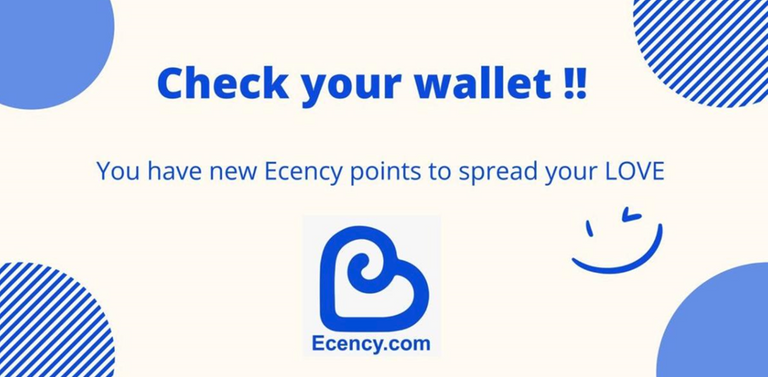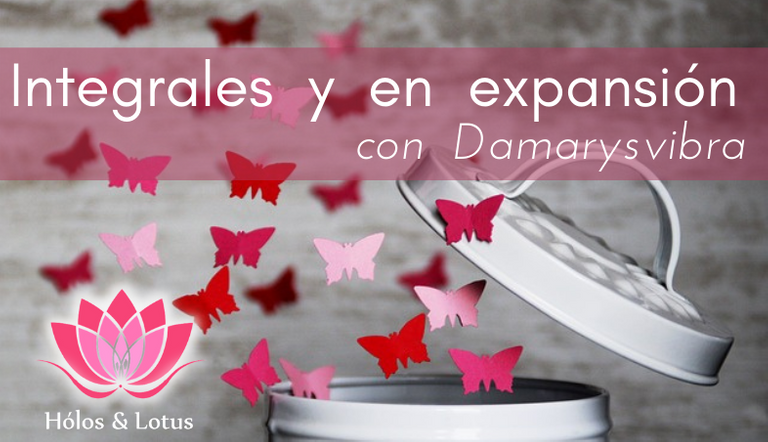
Conociéndome mejor
Cada día los científicos a través de sus investigaciones y experimentos conocen más profundamente el mundo de las emociones y los sentimientos: ¿Dónde se producen?, ¿Qué las desencadena?, ¿Cómo manejarlas?, ¿Cuáles son las respuestas de nuestro organismo?, ¿Cómo nos afectan en lo físico, en lo espiritual?, en fin la lista es larga y lo mejor es que su estudio no se detiene porque hay tantos elementos internos y externo que intervienen en ellos que cada persona puede tener una respuesta distinta ante un mismo hecho por lo que el compás de comprensión se abre de tal manera que siempre se podrá profundizar más en este conocimiento.
Sin embargo, cada uno de nosotros que, no somos científicos ni investigadores, tenemos una gran tarea con respecto a este conocimiento: Conocernos cada día más. Entrar a nuestro mundo interior puede resultar algo apasionante, saber por ejemplo: ¿Qué emociones me define, qué hacen que se “disparen”, cómo voy avanzando en el manejo de ellas, reconocer cuando permito que emociones que me ubican en el mal-estar se instalen en mi cotidianidad alejándome del bien-estar, qué me funciona para salir del mal-estar, cómo alimento las emociones que me hacen sentir bien? El autoconocimiento es infinito, siempre tendremos algo por descubrir en nosotros, en nuestras maneras, en nuestro talante, en las emociones.
Cuando estudiaba pedagogía conocí una valiosa herramienta para profundizar en este autoconocimiento, la ventana de Johari y es valiosa, no solo porque nos lleva a la auto-reflexión, sino porque también toma en cuenta lo que los demás perciben de nosotros, que aunque gritemos: ¡No me importa lo que los demás piensen de mí! Si queremos mejorar nuestras relaciones interpersonales, que son vitales para nuestro bienestar, es importante conocer como nos perciben las personas con quienes interactuamos.
Es posible que hayas escuchado hablar de La Ventana de Johari porque desde su creación, en el ámbito de la psicología, su aplicación se ha extendido para conocer y mejorar, por ejemplo: las relaciones de pareja, la familia y actualmente su uso en las empresas es común para evaluar y autoevaluarse en el mercado. Veamos brevemente en qué consiste esta herramienta.
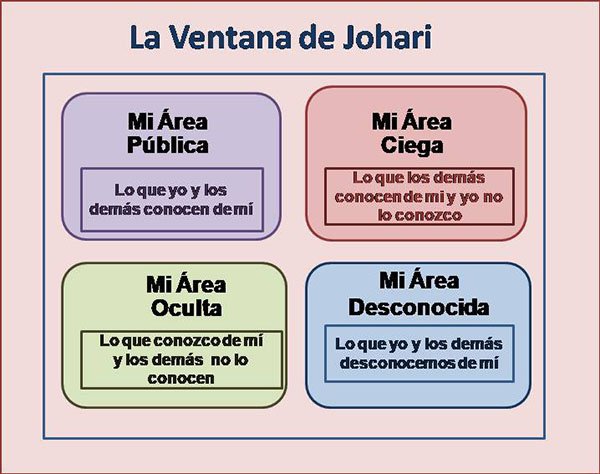
La ventana está dividida en cuatro áreas y cada una dice algo de nosotros, analicemos con algunos ejemplos:
Área Pública. Se refiere a tanto a lo que tú y los demás reconocen que eres. Así, ante las preguntas quién soy o como soy? Puedes responder con facilidad que eres: amable, responsable, cariñosa, desconfiada, regañona, tolerante, impaciente y, los demás, también ven eso en ti.
Área ciega. Aquellas “cosas” que los demás ven en ti pero que tu no las logras ver y por lo tanto no lo reconoces en ti. Por ejemplo cuando tu pareja en medio de una discusión te acusa de ser egoísta o manipuladora y tú no sientes que eres así.
Área oculta. Aquellas cosas de ti que solo tú conoces como pueden ser tus pensamientos o algún sentimiento que albergas, quizás desde niño y, no has compartido con nadie.
Área desconocida. Ni tú ni nadie sabe que eso está en ti, el ejemplo más común es una respuesta ante un hecho o situación que hasta tú mismo te sorprendes porque no te conocías esa faceta.
Una vez aclarado el significado de cada área viene el trabajo interesante: hacer el ejercicio de autoconocimiento y evaluación externa (cómo me ven los demás) y una de las maneras más fáciles de hacerlo es siguiendo estas pautas:
1.- Elabora una lista de entre 8 y 12 aspectos o rasgos de tu personalidad que te definen, que con toda seguridad puedas afirmar: Yo soy…
2.- Pídele a dos personas con la que tengas mucha confianza que te den una lista de los rasgos de personalidad que ven en ti, toma en cuenta que para muchas personas les resulta más fácil cuando la pregunta se plantea en término de positivo y negativo, bueno o malo por lo que, posiblemente, lo más conveniente es preguntar: ¿Qué aspectos positivos o negativos ves en mí?
3.- Ahora con las tres listas construye tu ventana de Johari:
Los rasgos que coincidan, en las tres listas, van al área pública.
Lo que los demás señalaron pero tú no las nombraste van al área ciega.
Los que tu señalaste y las otras dos personas no lo nombraron van al área oculta.
El área desconocida por el momento la dejamos en blanco o colocamos aquellos rasgos que no encajan en ninguna de las tres anteriores.
Una vez concluida esta parte viene tu reflexión y de ser posible sacar conclusiones de los resultados obtenidos y para ello te invitamos a participar en la iniciativa de esta semana que lleva por nombre “conociéndome mejor”.
Gracias por ser y estar
@damarysvibra

En múltiples ocasiones hemos señalado que toda transformación comienza con el reconocimiento de lo que somos como personas. El autoconocimiento, la auto-reflexión son procesos que nos ayudan a profundizar en quiénes y cómo somos, es por ello que en esta oportunidad y tomando en cuenta sugerencias de algunos participantes manifestadas, en el mes aniversario de la comunidad, que hoy traemos este ejercicio.
Es oportuno aclarar que el ejercicio es algo personal e intimo, no tienes porque compartir tus resultados, lo que si nos gustaría que compartieras es la visión general que da nombre a la iniciativa “Conociéndome mejor” para lo cual te puedes apoyar en los siguientes puntos, no limitativos. Inspírate y desde la experiencia cuéntanos:
1.- ¿Cómo te sentiste realizando la actividad?
2.- El ejercicio te sirvió para reconocer algunos rasgos de tu personalidad que no los tenías conscientes o solo hubo reafirmación de lo que ya conocías.
3.- Haz tenido alguna experiencia que corresponda a tu área desconocida. ¿Cómo fue, qué aprendiste?
Para publicar toma en cuenta lo siguiente:
•Publica en nuestra comunidad @holos-lotus.
•La publicación debe tener mínimo 500 palabras.
•Utiliza como primera etiqueta #conociendome para ubicar tu post con facilidad.
•Coloca el enlace de tu publicación en los comentarios de este
post.
•Si es de tu gusto invita a un hiver amig@ a participar y
rebloguea esta publicación para que llegue a más personas.
Publica desde ahora hasta el próximo martes 16 de agosto de 2022.
Gracias por participar. Te estaremos leyendo y comentando.
Reconocimientos
En la iniciativa pasada contamos con el patrocinio de Ecency, quienes muy amablemente nos otorgaron 100 puntos para distribuirlos en cuatro publicaciones, las seleccionadas de la iniciativa “Opto por la Alegría” fueron:
@lilianajimenez
@taniagonzalez
@eliasg85
@valrodriguez
Acá les dejo algunos de esos poster hermosos y significativos que ilustraron las publicaciones.
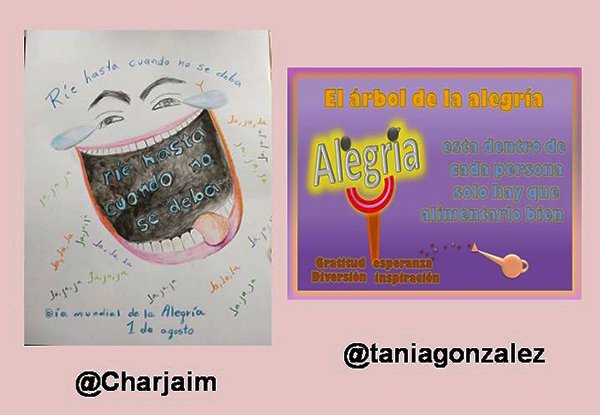
Para todos, felicitaciones por esos post hermosos, reconfortantes, motivadores, llenos de alegría por la vida que nos ayudan a crecer, agradecer y valorar cada momento de nuestra existencia. Gracias, Gracias por ser y estar

Getting to know me better
Every day scientists through their research and experiments know more deeply the world of emotions and feelings: Where are they produced, what triggers them, how to handle them, what are the responses of our body, how do they affect us physically and spiritually, the list is long and the best thing is that their study does not stop because there are so many internal and external elements involved in them that each person can have a different response to the same fact, so the compass of understanding is opened in such a way that you can always go deeper into this knowledge.
However, each one of us, who are not scientists or researchers, have a great task with respect to this knowledge: To know ourselves more and more every day. Entering our inner world can be something exciting, knowing for example: What emotions define me, what makes them "trigger", how do I advance in the management of them, recognize when I allow emotions that place me in the bad-being to settle in my daily life away from the good-being, what works for me to get out of the bad-being, how do I feed the emotions that make me feel good? Self-knowledge is infinite, we will always have something to discover in ourselves, in our ways, in our mood, in our emotions.
When I was studying pedagogy I met a valuable tool to deepen this self-knowledge, the Johari window and it is valuable, not only because it leads us to self-reflection, but also because it takes into account what others perceive of us, that even if we shout: I do not care what others think of me! If we want to improve our interpersonal relationships, which are vital to our well-being, it is important to know how people with whom we interact perceive us.
You may have heard of the Johari window because since its creation, in the field of psychology, its application has been extended to know and improve, for example: couple relationships, family and currently its use in companies is common to evaluate and self-evaluate in the market. Let's see briefly what this tool consists of.
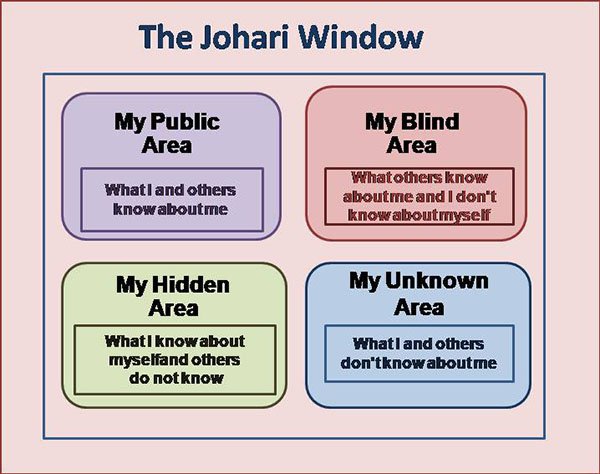
The window is divided into four areas and each one says something about us, let's analyze it with some examples:
Public Area. It refers both to what you and others recognize you are. So, when asked who I am or what I am like, you can easily answer that you are: kind, responsible, caring, distrustful, nagging, tolerant, impatient, and others also see that in you.
Blind area. Those "things" that others see in you but that you fail to see and therefore do not recognize in you. For example, when your partner in the middle of an argument accuses you of being selfish or manipulative and you do not feel that you are like that.
Hidden area. Those things about you that only you know, such as your thoughts or some feeling that you have harbored, perhaps since you were a child, and you have not shared with anyone.
Unknown area. nNeither you nor anyone else knows that this is in you, the most common example is a response to an event or situation that even you yourself are surprised because you did not know that facet.
Once clarified the meaning of each area comes the interesting work to do the exercise of self-knowledge and external evaluation (how others see me) and one of the easiest ways to do it is by following these guidelines:
1.- Make a list of between 8 and 12 aspects or traits of your personality that define you, that you can confidently state: I am....
2.- Ask two people with whom you have a lot of confidence to give you a list of the personality traits they see in you, take into account that for many people it is easier when the question is posed in terms of positive and negative, good or bad, so, possibly, the most convenient is to ask: What positive or negative aspects do you see in me?
3.- Now with the three lists build your Johari window:
- The traits that coincide, in the three lists, go to the public area.
- The traits that others pointed out but you did not name them go to the blind area.
- The ones you pointed out and the other two people did not name go to the hidden area.
- The unknown area for the moment we leave it blank or we place those features that do not fit in any of the three previous ones.
Once this part is finished, you can reflect and, if possible, draw conclusions from the results obtained and for this we invite you to participate in this week's initiative called "Getting to know me better".
Thank you for being @damarysvibra 
On multiple occasions we have pointed out that all transformation begins with the recognition of who we are as people. Self-knowledge, self-reflection are processes that help us to deepen in who and how we are, that is why in this opportunity and taking into account suggestions of some participants expressed in the anniversary month of the community, today we bring this exercise.
It is appropriate to clarify that the exercise is something personal and intimate, you do not have to share your results, what we would like you to share is the general vision that gives name to the initiative "Knowing me better" for which you can support yourself in the following points, not limiting. Get inspired and tell us about your experience:
1.- How did you feel doing the activity?
2.- Did the exercise help you to recognize some of your personality traits that you were not aware of or was there only a reaffirmation of what you already knew.
3.- Have you had any experience that corresponds to your unknown area, what was it like, what did you learn?
To publish take into account the following:
-Post in our community @holos-lotus.
-The publication must have a minimum of 500 words.
-Use the hashtag #knowingme as the first tag to make your post easy to find.
-Place the link to your post in the comments of this post.
-If you like it, invite a hiver friend to participate and reblog this post so that it reaches more people.
Post from now until next Tuesday, August 16, 2022.
Thanks for your participation. We will be reading and commenting.
AcknowledgementsIn the last initiative we had the sponsorship of Ecency, who very kindly gave us 100 points to distribute them in four publications, the selected ones of the initiative "Opto por la Alegría" were:
@lilianajimenez
@taniagonzalez
@eliasg85
@valrodriguez
Here are some of those beautiful and meaningful posters that illustrated the publications.

To all of you, congratulations for those beautiful, comforting, motivating posts, full of joy for life that help us to grow, thank and value every moment of our existence. Thank you, thank you for being.

Translated with www.DeepL.com/Translator (free version)
Fuente de imágenes:
Lámina. Elaboración propia en PowerPoint a partir de la propuesta de los creadores de la técnica "La Ventana de Johari".
Posters: Cortesía de las amigas: @charjaim, @taniagonzales, @lilianajimenez y @valeriavalentina
Si quieres ser parte activa de esta comunidad puedes escribir y compartir tu contenido en Holos & Lotus, comentar y apoyar las publicaciones de otros usuarios o realizar delegación de HP a la comunidad. Si deseas más información puedes contactar a @miriannalis, @yonnathang,
Banner elaborado en Canva con los elementos disponibles en su versión gratuita /
Banner elaborated in Canva with the elements available in its free version.
Banner de la Comunidad diseñada por la artista berlissanoja / Community
Logo de la Comunidad elaborado por el diseñador casilokodesign / Community logo designed by designer casilokodesign.

